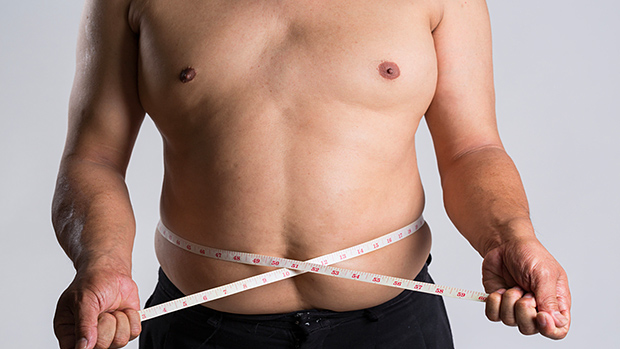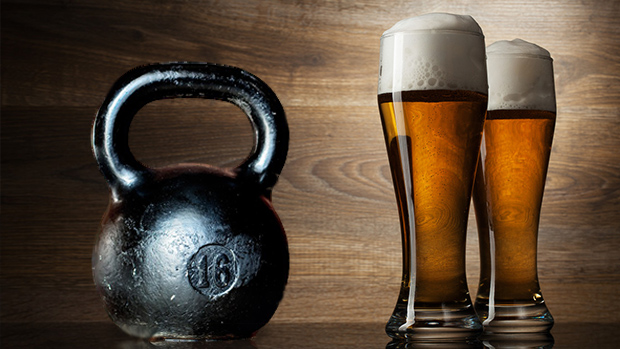I'm not just a bodybuilder, I'm also a health nut, and for that reason I put considerable effort into keeping my liver healthy.
Anyone who's ever watched Oprah or the Dr. Oz show (okay, not many of you, but still...) likely knows that the liver is essential for filtering out the thousands of toxins we ingest every day, but there's another, less popular reason why I make my liver a top priority: a healthy liver burns more body fat.
The liver is one of the major fat burning organs in the body, and is often referred to as a "fat pumping" organ. What this means is that the liver can carry fat into the small intestine through bile, where it gets taken out of the body by bowel action.
But if it's forced to constantly clear out the toxins and other garbage you throw at it, it has a harder time doing the fat metabolizing part of its job description.
So it makes sense, from both a health and body composition perspective, to keep your liver operating at 100% efficiency. Here are some tips to assist you in that quest.
Phase 1 – Detoxification and Cytochrome P-450

One of the liver's roles in detoxification involves a two-step enzymatic process for the neutralization of unwanted chemical compounds called Phase 1 and Phase 2 detoxification.
The Phase I detoxification system, often referred to as the "bagging of garbage" phase, starts with cytochrome P450, a family of enzymes that catalyze the oxidation (break down) of organic material (gas, liquid, or solid that contains carbon). These enzymes are found primarily in the liver, but can also be found to some degree in the adrenals and testes.
In Phase 1, cytochrome enzymes try to neutralize toxins to get them ready for excretion by way of Phase 2. In some cases, toxins are neutralized and converted from fat soluble to water soluble and then excreted out by the kidneys. Those toxins that were just neutralized and not excreted in Phase 1 will enter Phase 2.
Note: An important side-effect of Phase I detoxification is the production of free radicals, which occurs at basically a one-to-one ratio. In other words, for each molecule of toxin metabolized by Phase I, one molecule of free radical is generated.
Without employing adequate free radical defenses, every time the liver neutralizes a toxin it's subject to damage by the free radicals produced. Antioxidants help to manage this, so be sure to incorporate nutrients like lipoic acid, Vitamin A and E through red palm oil, and selenium through Brazil nuts, just to name a few.
Phase 2 – Detoxification
Phase 2 is where the garbage gets taken out. In this phase, cytochrome enzymes break down toxins from a fat soluble form to a water soluble form, which makes them easier to dispose of. This is where liver cells add other substance carrier molecules like sulfur molecules to assist in the disposal. The "garbage" is then taken out by urine or bile.
Note: For this reason, I'd encourage you to consume organic sources of fatty meats, dairy, seafood, etc. Fat soluble compounds cross biological membranes easily and build up in the fatty tissues and cells of the animals supplying the food. When we consume them, it ends up in our cells!
So, how do we help facilitate this process?
Drink REAL Cranberry Juice
No, I'm not talking about the artificial, sugar-laden crap like Ocean Spray cranberry cocktail. Many times these juices are loaded with high fructose corn syrup, which actually stresses the liver. Find an organic cranberry juice that is unsweetened and 100% real.
To say that the real stuff is tart would be an understatement. I get mine from Trader Joe's, and when I'm feeling particularly wealthy (a rare occasion) I buy it at Whole Foods. The 32 ounce bottle is under $4 at Trader Joe's.
I first read about cranberry juice helping dieter's lean out in Ann Louise Gittleman's book " The Fat Flush Plan." Gittleman maintains that cranberry juice cleanses the lymphatic system, which can help eliminate stubborn fat.
Specifically, it helps provide nutritional support through phytonutrients (anthocyanins, catechins, luteins, and quercetin) for the liver's cytochrome P450 Phase 1 and 2 detoxification pathways discussed earlier.
Gittleman's claims include that cranberry juice will noticeably improve cellulite due to this mechanism. Now I must admit, I was skeptical but I gave it a shot with a female client and to my surprise, her cellulite lessened. It didn't go away completely but her improvement was very noticeable within four weeks. I experimented with a few other female clients, and while it was not a miracle solution, it did help.
How does it work? The lymphatic system is responsible for carrying toxins away from the cells and body tissues. The phytonutrients in cranberry juice help to keep your liver's detoxification pathways open, so they aren't jammed up cleaning up the mess left behind by the host of environmental pollutants, trans-fats, sugars, etc. In other words, it helps "take out the trash."
The way I suggest most people try this is to take a 32-ounce container and put 4 ounces of the juice in it, along with 28 ounces of water. Drink this once a day, trying to build up to twice a day as you get accustomed to it.
This only amounts to 10-20 grams of extra carbs a day, and the additional water is also beneficial as the liver is more efficient at burning fat when you're well hydrated.
Drink Warm Lemon Water

Lemon juice, specifically the phytochemical d-limonene, acts as a liver tonic and assists in digestion by clearing the detoxification pathways and helping the liver produce more bile.
D-limonene is found in the essential oils of citrus fruits and many other plant species and has been shown in animal studies to be cancer protective. The theory is that limonene's protective effects are due to it being a strong inducer of both Phase 1 and Phase 2 detoxification enzymes that neutralize carcinogens.
Limonene also promotes the health of the GST (Glutathione S-transferase) system in the liver and small intestine, decreasing the negative effects of carcinogens. Another interesting fact is that d-limonene is a solvent of cholesterol, so it's been used clinically to dissolve cholesterol-containing gallstones.
The best way to use lemon juice appears to be in the mornings, when our bodies are in a natural cleansing phase. Use the juice of a fresh lemon in a cup of hot water and the lemon juice should be 100% real, namely fresh squeezed, not "from concentrate." Fact is, consuming anything sour makes the liver and gallbladder get rid of toxins, so real lime juice can also work.
Mix the juice of half a lemon with warm water. Cold water causes vasoconstriction in the stomach, resulting in less blood flow to the area, whereas warm water causes vasodilatation and will help increase metabolic rate.
D-limonene's half life is 12-24 hours, so one warm cup of lemon water every morning should be sufficient.
Consume Insoluble Fiber

I'm not a believer in using ground flax seed to obtain your EFA requirements, but its insoluble fiber content does make it useful for moving food and waste through your intestinal track. Insoluble fiber absorbs water in your digestive track and builds up stool bulk, helping it move quicker through the digestive system. Without insoluble fiber, food can move so slowly that it literally starts to rot in your intestine. Soluble fiber also helps slow digestion, allowing you to absorb more nutrients.
When you don't get enough fiber, up to 90% of your cholesterol and bile acids get reabsorbed and recirculated. This is just additional liver stress that can take away from its ability to metabolize fat. As fat and toxins are left in your body, they recirculate back into the liver in a process called "enterohepatic circulation," which means recirculation of bile back into the liver from the gut/small intestine.
It's normal for bile to go through this process and it occurs six to eight times a day, but if the bile is carrying a load of chemicals with it, problems like fatty liver disease and poor regulation of cholesterol levels can arise. A healthy fiber intake can help prevent this from happening as it can transport the bad stuff out of your body so that it's not put back into circulation and your liver.
How to Keep Your Liver Detoxification Pathways Clear
Now that you know a few things that help assist in liver detoxification, what kind of things should you do to keep your detoxification pathways running smoothly?
- Avoid the Terrible Trifecta: trans-fats, commercial vegetable oils high in omega 6, and sugar.Simply minimizing consumption of these three categories of "foods" and you'll be light years ahead of the pack!
- Eat organic whole eggs. Whole eggs are loaded with sulfur-based amino acids cysteine, methionine, and taurine. These help the liver to regulate bile production. It can also help Phase 2 of the detoxification pathway as the sulfur-based aminos act as carrier molecules to take out the trash. Egg yolks also are loaded with phoshatidylcholine, a great nutrient for overall liver health. It helps to prevent fatty liver, and helps maintain gall bladder function. PC plays a very important role in the transport of fats throughout the bloodstream.
- Eat kale! Kale is my all-time favorite veggie, mainly due to its antioxidant power.It also contains sulforaphane, a substance that helps convert toxins into nontoxic waste for elimination.
Wrap-Up
As bodybuilders, often our tendency is to focus only on the things that add weight to the bar and inches to our arms. But if your internal health doesn't match the external, those pretty pecs and bulging biceps aren't much more than sugar coating.
Fresh juices, fiber, eggs, and avoiding the junk you know you should be avoiding. Who says keeping your body's filter squeaky clean needs to be complicated?





